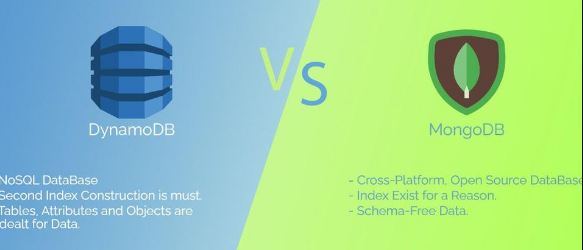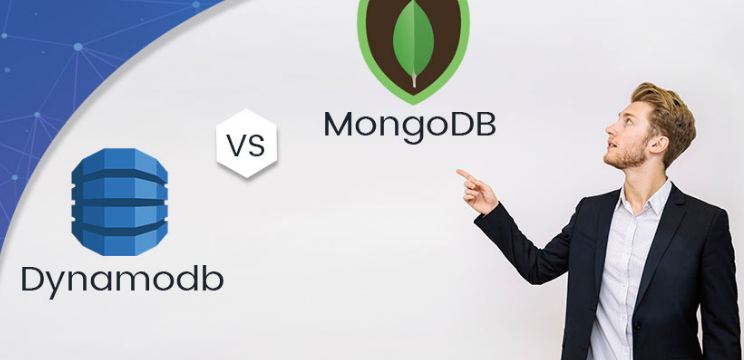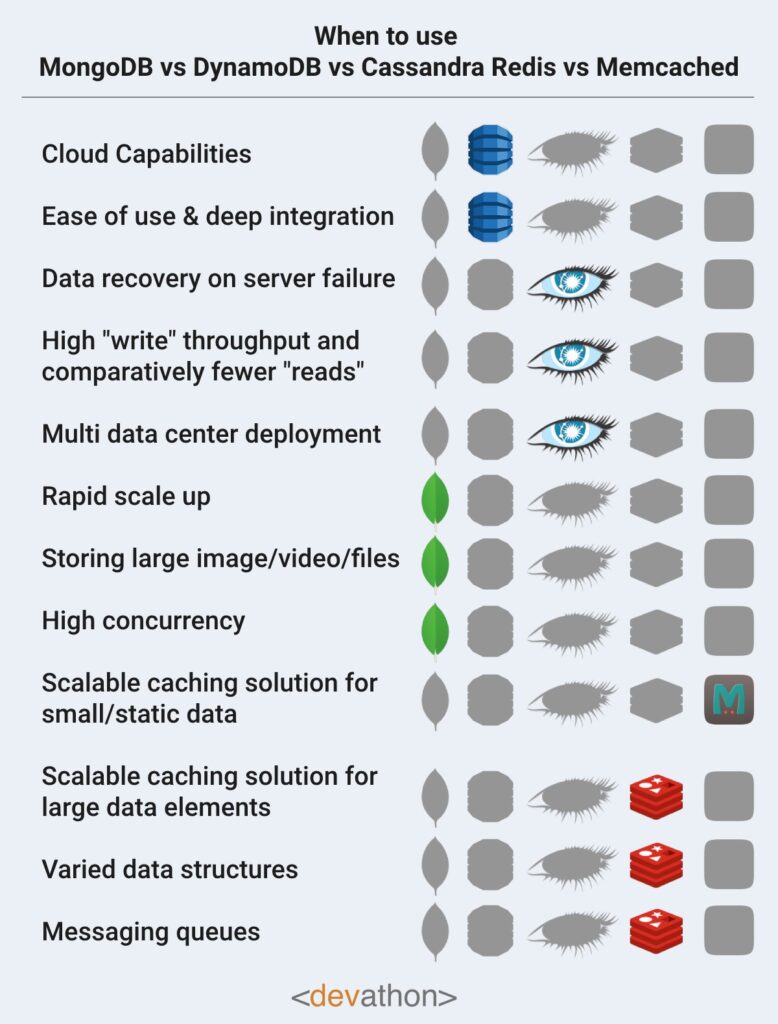In some of the previous posts, we have taken a peek into what are NoSQL databases and particularly about MongoDB. Here, in this post, we’ll be moving forward and proceed to learn about DynamoDB and MongoDB. Thereafter, we will delve deeper into MongoDB vs DynamoDB.
We will also see which one to choose for yourself. We will thereafter, look into every aspect of these DBMS. At the end of this article, thus, each one of us will be able to make a well-informed individual decision as to which NoSQL database to use based on the purpose of our use.
What Is A NoSQL Database? — MongoDB vs DynamoDB
A NoSQL database is like a mechanism for storing data that’s not tabular structure in nature. NoSQL databases often utilize in big data and real-time web applications.
The various advantages of NoSQL over relational databases include:
- Easier horizontal scaling to clusters of servers
- Simplicity of design
- Better availability
- Data Structures are more flexible & make some operations faster.
- These are the foremost common data structures employ by NoSQL databases.
- Key-Value Store – data is representative as a set of Key-Value pairs – an attribute name and a worth , eg or .
- Wide Column – uses tables, rows and columns like during a electronic database , but unlike a electronic database , the names and formats of the columns can vary from row to row within the same table.
- Graph – focuses on the relationships between data. A graph consists of two elements – a node and a relationship.
- Document – data is encapsulate during a ‘document’ which may be a standard format or encoding, eg XML, YAML or JSON.
- Each document features a unique ‘key’ to spot it. Documents are often group using Collections, Tags, Metadata or directory hierarchies.
- No SQL databases generally compromise consistency of writes/reads with availability and speed.
Barriers to NoSQL Adoption :
- Use of low level query languages.
- Lack of standardized interfaces.
- Large enterprise investment in existing relational databases.
MongoDB vs AWS DynamoDB
AWS DynamoDB ?
AWS DynamoDB may be a fully managed proprietary Key-Value and Document NoSQL database which will deliver single digit millisecond performance at any scale.

DynamoDB includes security, backup & restore and in-memory caching. it’s a multi region and multimaster database deployment which may scale to handle tens of many request per second. DynamoDB was launched in January 2012. Applications include mobile, web, gaming, ad tech, retail and IoT.
Advantages :
- Low latency – single digit millisecond data access at any scale, anywhere within the world.
- Serverless – no servers or database software for patrons to provision, install and manage.
- Autoscaling – scales up and right down to handle load spikes.
- Security – all data encrypted by default, granular identity and access control on all tables.
Use Cases :
- Metadata stores
- User detail stores
- User Transactions
- Inventory tracking & fulfillment
- Shopping carts
What Is MongoDB?
MongoDB can be term as a scalable, flexible document database written in C++. It is quite easy for developers to use, yet still provides all the functionality required to satisfy complex and high performance requirements at scale.
MongoDB is develop by MongoDB Inc, a US based software company. It stores data in JSON like documents. Fields can vary in several documents and arrangement can change over time. MongoDB was launch in February 2009. It provides variety of powerful ways to research data, like Ad-hoc queries, Indexing and Real time aggregation.
MongoDB is meant from the bottom up to be a distributed database. This suggests prime availability, horizontal scaling and multi region distribution, all come as standard and are easy to line up.
Distinguishing Features :
- Automated Sharding, horizontal scaling, optimum data location to make sure low latency database writes from any geographical area thus .
- Also, HA clusters enable 99.995% uptime SLA no matter where MongoDB is hosted.
- JSON formatted documents increase speed and thereby, the adaptability .
- Also, complex queries get executed within MongoDB. Thereby, minimizing the need for third party data analytics tools.
- Rich monitoring and real time performance dashboards also give great visibility into database performance.

Now, that we are looking unto DynamoDB vs MongoDB but if you would like to know about MongoDB vs MySQL then please look here……
DynamoDB vs MongoDB
Now, that we all know what NoSQL is, and what both AWS DynamoDB and MongoDB are, let’s take a glance at a number of the key differences between these two NoSQL database offerings.
Database Location
MongoDB are often hosted anywhere – any public or private cloud, or on premises data-centers. While, AWS DynamoDB may be a fully managed AWS service, so you’ll obviously only run it within the AWS cloud – there’s no on-premises option.
Setup & Installation
MongoDB is difficult to put in and configure, and there’s little support available to help with this. Whereas, AWS DynamoDB is straightforward to line up, because it may be a fully manage AWS service which may be configured via the AWS console or the AWS API.
Queries
AWS DynamoDB supports Key-Value queries. So in order to perform analytics queries, data must be replicate to a different AWS service like Amazon Athena.
MongoDB features a rich command language – queries are often perform by single keys, ranges, faceted search, JOIN and graph traversals, and geospatial queries. Also, fast analytics queries get achievable with on-demand materialize views.
Database Security
AWS DynamoDB, like many AWS services, is extremely secure by default. Users of AWS DynamoDB simply got to follow standard programming best practises. The remainder is also take care of by AWS under their role within the ‘Shared Responsibility Model’ for security.
MongoDB offers RBAC (Role Based Access Control), which incorporates standard, well defined roles, and therefore the ability to make custom roles. MongoDB supports SSL and TLS encryption, and may undergo disk encryption. Beware though that unless you’re using MongoDB Atlas, you’ll be liable for the safety of the whole stack on which MongoDB is host.

The Ultimate Question — Which one of them should I choose
See, this question is the perennial problem when tasked with comparison between two similarly identifiable solutions. Here, in this case also, it is quite hard to differentiate between these two.
The choice of which DBMS to choose , i.e. whether one should choose DynamoDB or MongoDB lies in the fact that we need to take a look on. A look on our future cloud strategy business, plus the precise requirements of our application, thus.
It is to note that both these NoSQL databases are able to deliver great, compelling and equally efficient performance and high availability at global scale. Therefore, it all boils down to which database suits us based on our prerequisite requirement and demand.
**** SUMMING UP ***
We have seen the multi-featured comparison of MongoDB and DynamoDB DBMS. We have seen how in the end, it all depends on the type of data we are working on and the requirement that we possess. How it depends on our future cloud strategy too. So, it is a basic choice that we have to make for ourselves all depending on our work scheme. That is if we are too concerned with speed and performance then we shall opt for MongoDB. Whereas, if we need to work with on AWS cloud storage solutions then DynamoDB is best because it is well supported from Amazon AWS. All in all we also had a DynamoDB vs MongoDB showdown.
